-
Posts
231 -
Joined
-
Last visited
Content Type
Profiles
Forums
Articles
Posts posted by odie
-
-
On 1/16/2020 at 6:43 AM, billdoubleu said:
I haven't seen 1917 yet. The Lighthouse looked absolutely incredible though. There was definitely so very much time and effort put forth in crafting that look. I think it really paid off in serving the story.
+1
Film gets you in with excellence and a small budget
-
Best cinematography
1917
Once Upon a Time in Hollywood
The Irishman
Joker
The Lighthouse
-
-
On 11/28/2019 at 5:30 AM, Snowfun said:
Choice.
There really is something for everyone.
+1
the most important thing to me isn’t specs , marketing or new cameras but IMAGE CREATIVITY ( the art of cinematography) and CAREER THANK YOU KODAK FILM and that nice lady who sold me that super 16mm camera two years ago(its a gem)
-
On 8/27/2019 at 12:28 AM, mercer said:
No, not without an external recorder. But with the experimental build and 14 Bit Lossless, file sizes are dramatically smaller without any loss in quality. Also if you use MLVFS file system for post, the files open up in Resolve without any transcoding to DNGs. The whole process is really quite simple now.
Honestly, all Zeiss lenses, I’ve tested, work great with ML Raw. I’ve tested Rollei Zeiss, Contax Zeiss and the ZF Classics.
Although, the newer ZF versions are a bit sharper, I prefer the West German made Rollei Zeiss. I find they have the perfect mix of sharpness, color separation and character with my 5D3.
Here’s a frame from the 50mm 1.8...
And here’s a frame from the 25mm 2.8...
Hey Mercer
thanks for the reply
I’ve been exporting pro res files to resolve using Ilia’s app
is that right?
-
When shooting with the 5d3 is there a way to record pro res to the sd card?
I’m shooting on film and my 5d for two night scenes
-
2 hours ago, Mattias Burling said:
It still seems like you haven't fully understood. The Netflix 4K requirement is for productions made by Netflix. I can use whatever I want and if it's good enough they will accept.
To this day almost half of all the movies at the Oscars etc are shot on film or HD. And they all go on Netflix.
Netflix even still pick up TV shows shot on s16.
This has been talked about to death on this forum in the past. So let's get back to the real subject.
+1
...and I hope they pick up my film which is being shot on a super 16 Arr sr 2
-
FS7 in 2019
In: Cameras
On 7/12/2019 at 5:22 PM, Django said:After much deliberation over my next big camera purchase, I finally ended up going for a used Sony FS7 mark 1.
This may come as shock to some as I'm known here as being more of a Canon advocate and was torn until recently in between a C200 & C300 II.
That said most of my paid work comes from a production company that uses mainly Sony gear so it kinda made sense to go this route.
Also it was simply a deal I couldn't neglect: under 500 hours with a zacuto loupe and tilta v-mount support for under 4000 euros.
I think the camera is still very relevant today with beefy internal XAVC-I 10-bit 4:2:2 codecs up to 4K60p, 180fps and a slew of advanced settings including LUT import and the elusive Cine EI mode. Add the XDCA module and you get internal ProRes & Raw external. It's also Netflix approved for those interested in that sort of thing.
So far 10-bit 4:2:2 S-Log3 has been a joy to grade. I keep pushing and colouring and it just doesn't break! Where 8-bit XAVC-S files usually start to look cartoonish, the IQ here is solid AF.
SOOC the skin tones don't hold a candle to Canon so I'll be mainly shooting in S-Log.
Overall I'm pretty thrilled with the purchase, I've been staying clear from Sony for the longest time but this bad boy is on a whole different level I feel.
I’m filming with a super 16 mm film camera in 2019 so I wouldn’t worry
- webrunner5 and hansel
-
 2
2
-
It’s a business and it the same for all the companies
-
8 hours ago, thebrothersthre3 said:
If you are lighting the shot it doesn't matter that much what camera you use (to an extent obviously lol).
Its reached a point where digital has gotten as good as film(arguably of course) and now the tiny prosumer cameras are closing the gap with cinema cameras.I think the GH5S has all of those. XT3 beats it on other levels tho
Film has an undefinable quality that is not related at all to digital
but as previously stated the choices in digital are numerous
-
-
After catching up on the subject I visited another site
Vitaliy is commenting on a post from the guy that shot with the camera from bm
as I said before I shoot on film but use the 5dm3 ML for lowlight inserts (which I read about on this site and would test this camera when out)
anyways this is what Vitaliy had to say:
“What exactly BM (Canon/Nikon) is doing that must be stopped? They handpick filmmakers, journalists, bloggers (this time filmmakers as you said) and send them early cameras. It is ok to send someone you choose early samples, but ONLY for internal feedback and testing. As soon as this people start posting various footage, their reviews, hands-ons, etc - well, this becomes bad. Intentionally or not by having such people pack company is able to get PR result that they want. But it is not objective result that society needs.
People in such packs know that is expected from them and know that if they do not deliver that is expected or write things that are far from expected - they are out of pack. And usually with no chance to go back.
Such firms behavior become worse and worse with each year. And can be observed not only in cameras.
Does such approach affect sales? Definitely.
What must be made? Before actual mass sales only company own promotion(!) videos/texts must be allowed, clearly marked as such. No benchmarks or comparisons must be allowed to be made by company or anyone else. If company so much want to provide free review samples, they all must be send to one address for storage and any reviewer since announcement to sales moment can apply for them. 3 days after sales start this samples will be sent to random people who applied.
Who fill be hurt? Well, big channels, big review sites, close pack members - who are information monopolies now due to early access. All other, including general public - will gain a lot.
Considering Andrew being unfit, not right filmmaker and such. Well, I think it is elitist view. Andrew's site and PV site actually appeared during the moment where such "not right filmmakers" actually made a lot of good for filmmaking society. Now you think that it is best to shut up this niche as this people due to their independency can actually sometimes tell or write things companies do not like. I am far from Andrew friend as everyone knows here. Yet BM company position here is position of quite big capitalist company acting against society and such must be stopped.”
but 208 pages for a camera?
-
-
1. only a director and the dp should be able to approve a camera..(not Netflix)
2. a filmmaker can use whatever camera he or she wants..
3. although I tried to resist.. kodak film has an amazing quality..that I prefer
-
“While digital sees blue Kodak film sees shades of blue..”
a remarkable view..in a very competative market with Kodak giving the dp a step up
go to Panavision in Woodland Hills where a super 16mm or 35mm camera is waiting ..it’s your destiny
-
DIY Film Look
In: Cameras
On 6/25/2017 at 11:22 PM, HockeyFan12 said:I think it was Fotokem or one of their competitors I think. We saved money by going with a cheaper session (first light rather than best light) and a cheaper delivery format is what I was referring to, lower quality processing and scan. We were basically grading proxies. They wanted $50k extra for a proper scan, which would have been worth it, but it wasn't in the budget and the look of the film suffered for it, though I think we did well with what we had.
The increase in budget for shooting film rather than video was between $100-$200k. I believe the budget for the feature was just under $1 million. I don't know more, I wasn't a producer on it, just worked in camera department.
That does seem like a very good price. But even at $200 for a roll of 16mm film and $200 for development and scan (lower than I've ever seen available, but consistent with what you suggest) that's $400 for ten minutes of footage (inevitably the ends don't get used, or it would be 11 minutes). At a very conservative shooting ratio of 15:1, a 100 minute feature would cost $60,000 extra at those very low rates (which I still have yet to find).
I agree, I have seen small features shot competently for under $500k and so $560k isn't that much more. But the extra costs in terms of support gear, monitoring, and lighting (500 ISO film is about as clean as 3200 ISO digital, you have a ton of over but your under is just dreadful) push things up much higher. I just can't figure out the math. Even if everyone is working for free, I can't imagine a budget under $200k for a 16mm feature.
I know the story about Primer, but that's sort of the extreme example of a 1:1 shooting ratio and shooting in someone's garage. 99% of stories won't work with those limitations and the budget was much higher than that once it was polished up for a salable deliverable.
What features have you shot on 16mm for under $5k? Were they small stories like that or were you able to scale up efficiently beyond that? Did you pay the crew? What gear did G&E gear and how big was the crew? I still can't do the math.
I used to shoot a fair amount of 16mm (for student films and stuff, never professionally), and even back in those days when film was cheap it was still hundreds of dollars extra for a short exercise versus shooting digitally.
Nevertheless, for the money, film is still a great deal and I like your idea of using a digital b camera sparingly. I still plan to shoot my next short on film, but I'm budgeting a few thousand dollars extra just for a 10-minute short and planning to shoot with a tiny tiny ratio.
.... for no budget film shooting....post production...first light is enough ..it's amazing...you don't need more...and the $$$ saved on color timing...(you don't need any) with the time and money you save take a vacation ...have a fun shoot..
this is from Nolan's film...you get to put this on your poster too...
-
On 6/22/2016 at 8:55 PM, jasonmillard81 said:
The following conversation gave me pause and I am hoping to get a few questions answered by more knowledgeable individuals:
One of the topics discussed was how these DPs feel that are sort of forced to use digital and many long for the days of film. In addition they seem to acknowledge the necessity to keep up with the 4K, 6K, and 8K race but that sometimes the preferable image is of a much lower resolution and they spend time trying to achieve that by softening the image up etc. as they (maybe Deakins) feel that the audience finds the optimal image to not be so "realistic".
I'm curious on what everyone's opinions are. If one isn't doing paid work and 4K+ aren't demanded then you still get away with investing in a new product that is 1080P if the image is currently seen as not only acceptable but desirable?
check out a movie called "BABY DRIVER" question is answered
-
DIY Film Look
In: Cameras
On 6/25/2017 at 11:39 PM, mercer said:Can you still buy short ends? That used to be a great way to save on film costs, of course you were limited to what stock they had available at the time.
yes..and it's really cheap (for a no budget filmmaker it's great) with short ends you can now film in 35mm with a super 16mm budget..
also Panavision has super deals on 35mm cameras..and sometimes will sponsor you ..
-
DIY Film Look
In: Cameras
On 6/24/2017 at 10:33 PM, HockeyFan12 said:The last feature I was on that shot 35mm had a very low shooting ratio, got a killer deal from Kodak, and used horrible low quality scans. I think the added cost of shooting film (despite a virtually free camera) was nearly $200k. This was the ABSOLUTE cheapest deal around at the time, and prices have gone up. I just can't figure out how you're shooting that cheaply. They also shot with a digital b cam for a pretty substantial part of the shoot.
I find lab fees and scans significantly more expensive than film stock if you want high quality 2k scans. What labs are you using that will develop and 2k scan 400 feet of 16mm for $200? I've yet to find any but every time I budgeted it out shooting on 16mm adds at least a few thousand dollars to the budget for a 10-minute short, and maybe much more. I agree having a digital b cam is smart. That said, for a short film, a few thousand dollars is not much, but difficult to stomach when it's all out of pocket and with no hope of a financial return.
who did the scan on that film...? Who was your DP? If a lab does a bad scan (it's rare)..but they'll do it again for free. 200k was the budget of the completed movie? the latest quote I got for two 400 rolls of 35mm and 3 rolls of super 16mm was 700 dollars for developing and top pro scan. Just call one of the kodak labs...
if you're nervous start with one roll of film...it's cheap...you can make a full length movie with super 16mm for under 5 thousand
-
-
On 6/23/2017 at 0:20 PM, sudopera said:
I bumped on this video below and just wanted to hear your opinions on the matter.
Maybe my eyes are not used to this much detail but I don't like it, simply because it's hard to concentrate on content when I'm constantly bombarded with so much small detail that looks almost surreal.
I really think that 4K-5K is the sweet spot and camera manufacturers should turn their attention to DR, high framerates, efficient codecs and color science, and stop the resolution wars.
I know you can throw softening filters in the mix but what is the point then to use 8K in the first place.
I'm not all against it because it will certainly have it's use for some scenarios, but I wouldn't like it to become a norm in the future.
considering most films are shot on 2k and released on 2k ...(with millions spent on the budgets). 8k is not really needed..but it might help sales
-
jj abrams just shook the mag while filming (is that what you mean?)
-
DIY Film Look
In: Cameras
On 6/22/2017 at 8:40 AM, HockeyFan12 said:What about the cost of film and, in particular, film scans? The scans always seem to be the "gotcha" to me.
I have access to an SRII. What do you mean by hybrid shooting? I agree that it's easy to sneak a little digital into something shot on film but difficult to replicate the look of film for an entire project if that's what you mean.
take advantage of kodak film within your budget...(yes you can get cameras for free from camera houses and friends) if you can only budget 3 rolls then shoot those rolls where it best suits the spot or film..(if you can shoot the entire project on film that's great .. feature films have been shot for under 5 thousand) digital cameras helps keep cost down when you don't have the budget(HYBRID SHOOTING) and knowing that you have a back up...which is why this is the best time ever to film on film
the cost of scanning and developing is about the same as the cost of the film (also you will save a lot of money and time on post coloring )
check out the kodak labs and which one is near you...
Laboratories Directory | Motion Picture Film - Kodak
-
DIY Film Look
In: Cameras
On 6/8/2017 at 11:21 AM, HockeyFan12 said:I wasn't being snarky before. I'm trying to budget for a 16mm shoot. But the scanning fees are so high and support gear for it and monitoring equipment seems impossible...
i just started a thread on this but it disappeared..if it disappears again I'll PM you..but it's dirt cheap because of prices of cameras and hybrid shooting with digital cameras and huge savings on post..the end result is a project that really stands out


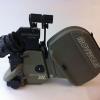
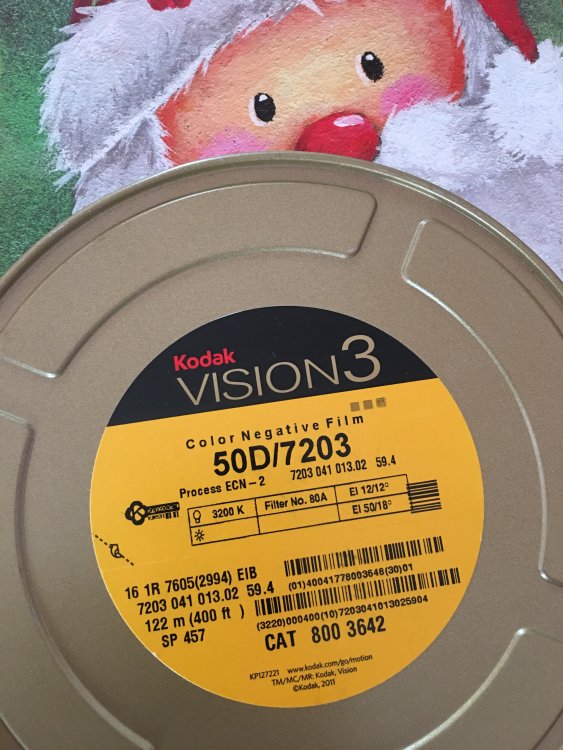

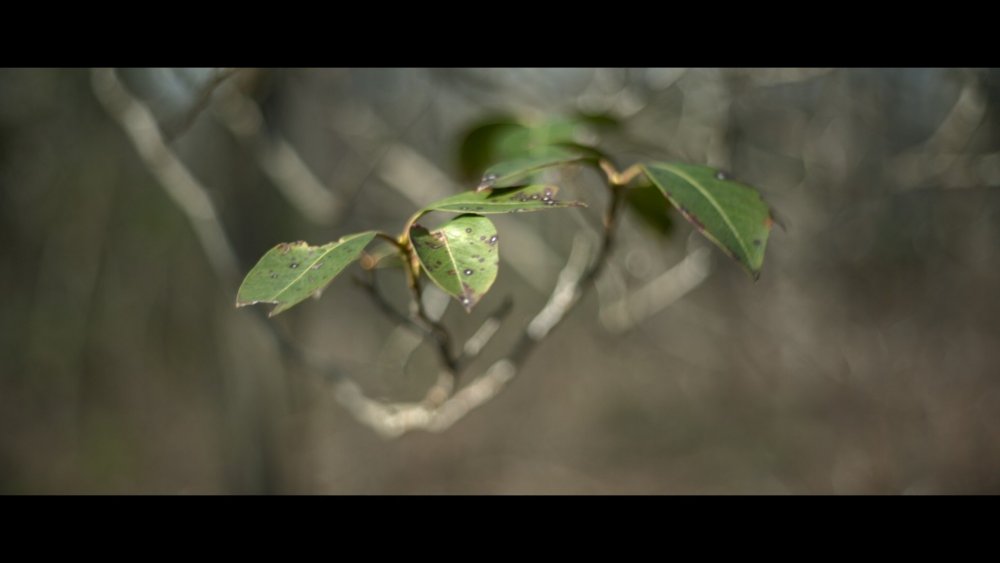
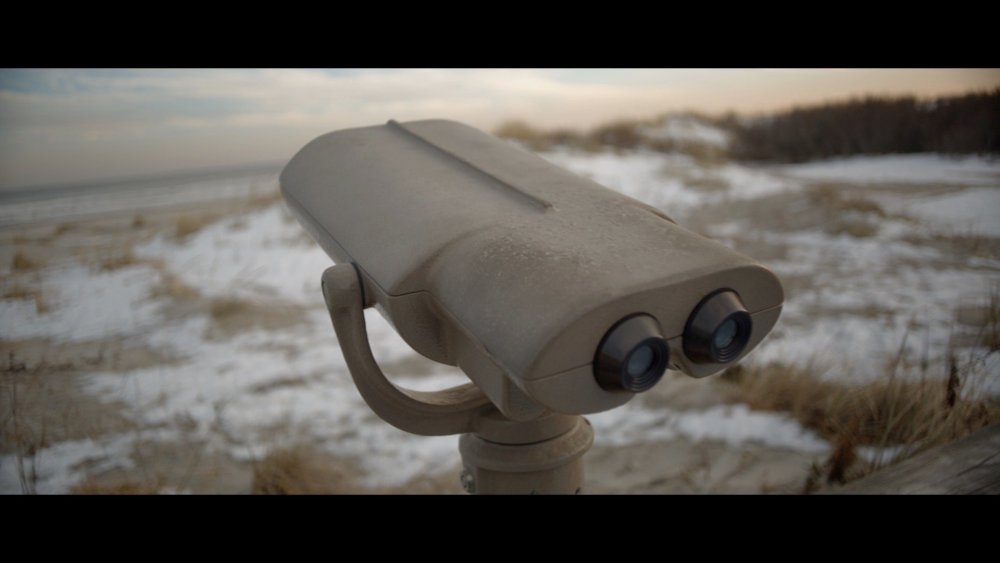


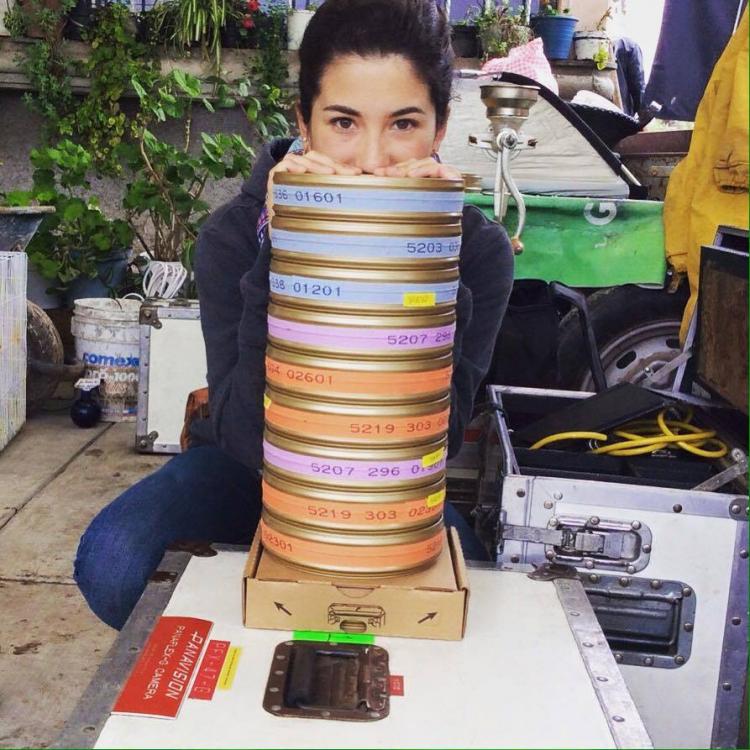
COVID19 Kibosh
In: Cameras
Posted
Thank you to all the health care workers who are working tirelessly!!!!! ( my Dad and older brother are both doctors working )❤️🙏
we thank you!!!